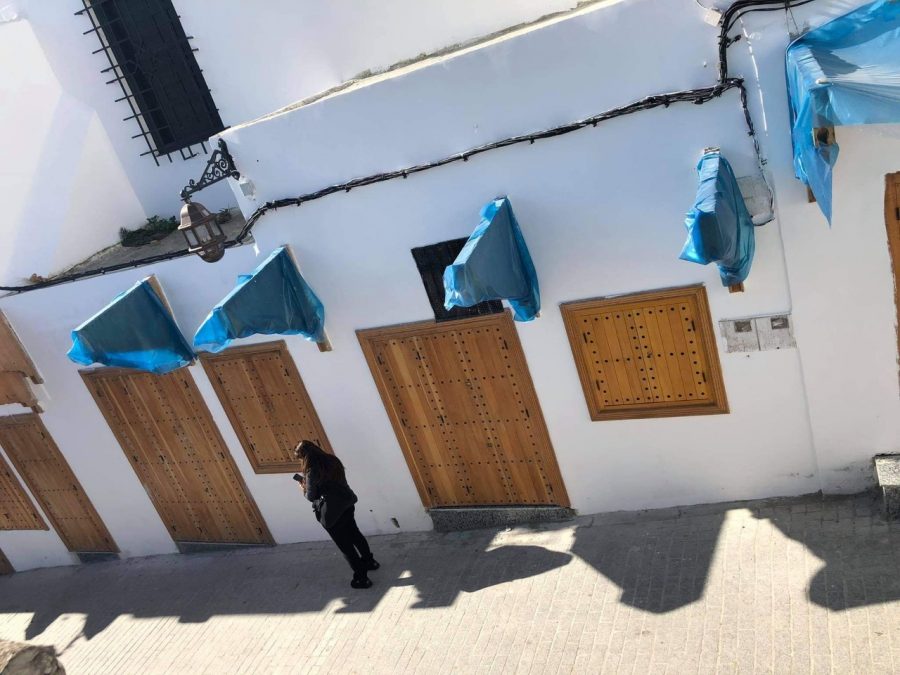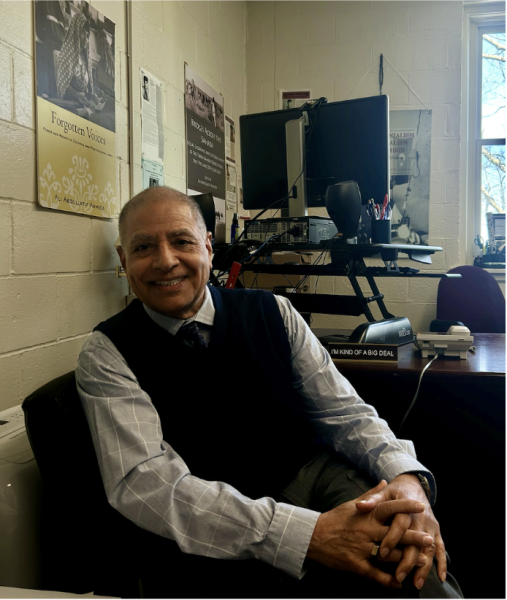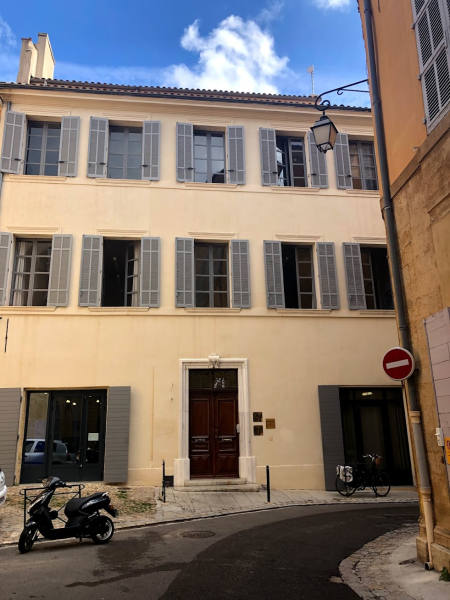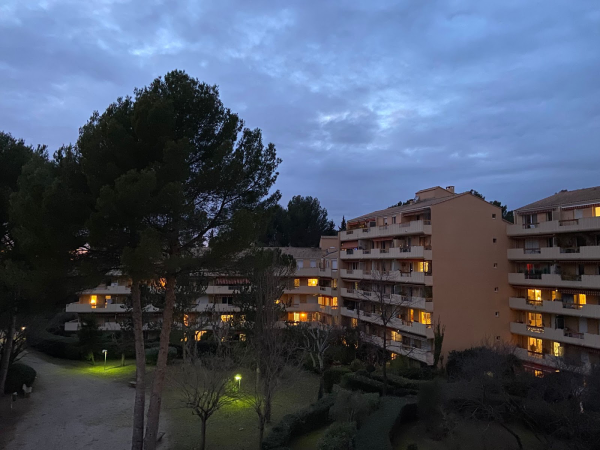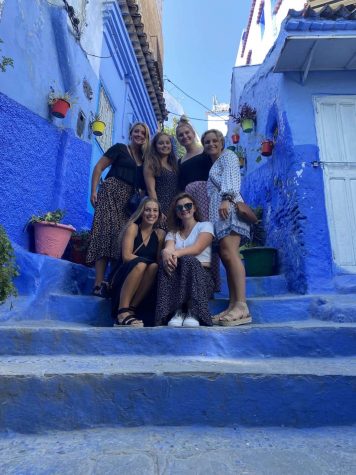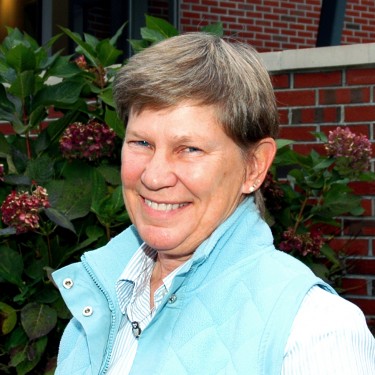New Tangier, Who Dis?
UNE’s Global program looks to the future of sending students back to Morocco.
The new door and window installations in the Tangier Medina.
After what will be a year-and-a-half hiatus, UNE’s Tangier Morocco program is planning on having students return.
“For fall, we are optimistic that the program can run and as the spring progresses with vaccine rollouts we should have a clearer picture. We will have students plan for courses in Biddeford though in order to have a sound back-up plan in place” says Emily Dragon, UNE Global Program Director.
For future students who will roam the streets of Tangier, they will experience an upgraded city than their predecessors, but overall the program is being planned to largely remain the same.

“The Covid period has been a time to start the big projects in Tangier because of the decreased amount of tourism and street life,” says UNE Tangier Campus Manager Mourad Benikrane. In the wake of Covid, the city has moved forward with renovation projects that have improved its infrastructure.
The historic Medina, otherwise known as the old part of a northern African city, where shops line the narrow cobblestone streets filled with vendors selling their wares, will have a different look. Instead of finding the shops open and packed with people, huge decorative wooden doors have been installed for each shop to enforce the new capacity rules reports Mourad.
Morocco has felt the impacts of Covid like any other country, but compared to the U.S. which just surpassed 500,000 deaths, Morocco has fared well. Back in January, Africanews reported Morocco launched, “one of Africa’s most advanced vaccination programs” which primarily targets health care workers, security forces, and people over 75 years old.
As of March 1st, 2021, Morocco has faced around 483,000 cases which is around 1% of the total population. Morocco has had a 97% recovery rate, with only around 8,000 deaths according to Worldometers. As of February 27th, 2021, Our World In Data reports 162,000 people have been fully vaccinated, with around 3.4 million who’ve received 1 dose.
A big part of this response has been Morocco’s culture around wearing masks. Mourad reports that a majority of the population, especially in Tangier, wears masks appropriately and that local law enforcement heavily encourages wearing masks for those who opt against wearing them. “Wearing masks is compulsory in Moroccos,” says Mourad.

Taxis, a major mode of transportation in Tangier, have now reduced capacity to two riders, with the bigger taxis that normally fit 5-6 people being reduced to 3-4. Buses are also operating at half capacity.
As for the program, the only differences so far are ones students will already be used to. The campus has adapted similarly to the Covid protocol that students have been used to on the Biddeford Campus, with the classrooms and cafeteria being transformed to enable social distancing.
As for travel within Morocco and abroad into Europe, that piece remains largely up to the climate of the world come next fall. Travel might be limited to within Morocco, but it is too early to tell. As of now, the many weekend excursions within Morocco that students experience as a part of their program are being planned as normal, but a large part of that comes down to whether the various restaurants commonly used by the program will be open and able to accommodate all the students.
“I am so excited to have the program back on,” says an optimistic Mourad. In this time of vacant halls, Mourad has kept himself busy by doing lots of walking in Tangier, along with taking online courses in art, museums, and painters. “Every day I’m learning something new.”
UNE’s other study abroad programs in Spain, France, and Iceland, are being planned to operate at reduced capacity.



